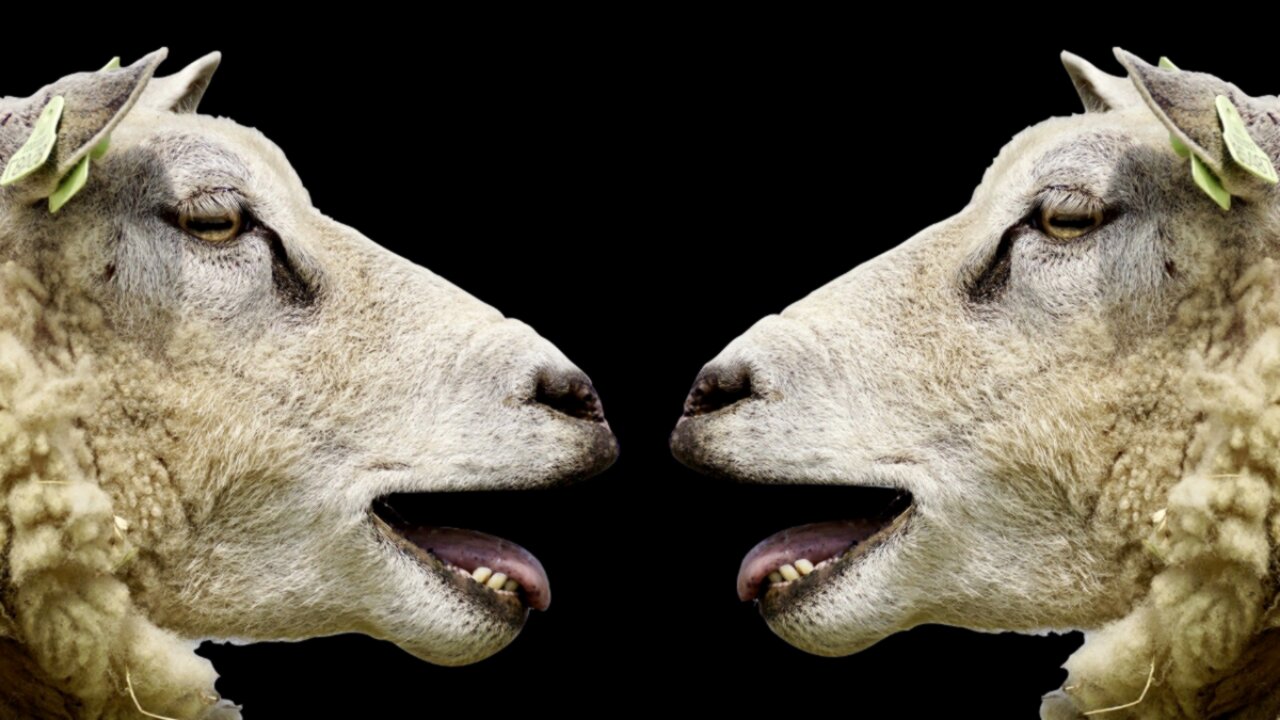Premium Only Content

Angry Sheep Head Butts for Dominance
Headbutting is a dominance behavior in sheep. Sheep headbutt to establish dominance. This could be with other sheep or with people. Headbutting usually happens when a pair of rams both think they should be the one in charge of the pasture, so a challenge starts.
sheep
domesticated animal
Also known as: Ovis aries
Written and fact-checked by
Last Updated: Jul 17, 2023 • Article History
flock of sheep
flock of sheep
See all media
Category: Animals & Nature
Related Topics: Rambouillet Merino Hampshire Southdown Suffolk
Recent News
Jul. 17, 2023, 9:31 PM ET (AP)
Princess Diana’s iconic black sheep sweater could fetch at least $50,000 at auction
Cheviot
Cheviot
Delaine
Delaine
Discover sheep that shed its wool and how it can benefit farmers
Discover sheep that shed its wool and how it can benefit farmersSee all videos for this article
sheep, (Ovis aries), species of domesticated ruminant (cud-chewing) mammal, raised for its meat, milk, and wool. The sheep is usually stockier than its relative the goat (genus Capra); its horns, when present, are more divergent; it has scent glands in its face and hind feet; and the males lack the beards of goats. Sheep usually have short tails. In all wild species of sheep, the outer coat takes the form of hair, and beneath this lies a short undercoat of fine wool that has been developed into the fleece of domesticated sheep. Male sheep are called rams, the females ewes, and immature animals lambs. Mature sheep weigh from about 35 to as much as 180 kg (80 to 400 pounds). To browse sheep by breed, see below.
sheep
sheep
sheep
sheep
A sheep regurgitates its food and chews the cud, thus enabling its four separate stomach compartments to thoroughly digest the grasses and other herbage that it eats. The animals prefer grazing on grass or legume vegetation that is short and fine, though they will also consume high, coarse, or brushy plants as well. They graze plants closer to the root than do cattle, and so care must be taken that sheep do not overgraze a particular range. Sheep are basically timid animals who tend to graze in flocks and are almost totally lacking in protection from predators. They mature at about one year of age, and many breed when they reach the age of about one and a half years. Most births are single, although sheep do have twins on occasion. The lambs stop suckling and begin to graze at about four or five months of age.
Humpback whale breaching out of the ocean. (sea mammal; ocean mammal)
Britannica Quiz
A Quiz from Shrews to Whales
Sheep were first domesticated from wild species of sheep at least 5000 BCE, and their remains have been found at numerous sites of early human habitation in the Middle East, Europe, and Central Asia. Domesticated sheep are raised for their fleece (wool), for milk, and for meat. The flesh of mature sheep is called mutton; that of immature animals is called lamb. There were estimated to be more than one billion sheep in the world in the early 21st century. The major national producers are Australia, New Zealand, China, India, the United States, South Africa, Argentina, and Turkey. Countries that have large areas of grassland are the major producers.
Merino
Merino
Shropshire
Shropshire
Domestic sheep differ from their wild progenitors and among themselves in conformation, quantity and quality of fleece, colour, size, milk production, and other characteristics. Most breeds of domesticated sheep produce wool, while a few produce only hair, and wild sheep grow a combination of wool and hair. Several hundred different breeds of sheep have been developed to meet environmental conditions influenced by latitudes and altitudes and to satisfy human needs for clothing and food. Breeds of sheep having fine wool are generally raised for wool production alone, while breeds with medium or long wool or with only hair are generally raised for meat production. Several crossbreeds have been developed that yield both wool and meat of high quality, however. Of the more than 200 breeds of sheep in the world, the majority are of limited interest except in local areas. For articles on individual breeds of sheep, see Cheviot; Hampshire; Karakul; Merino; Rambouillet; Shropshire.
-
 2:59
2:59
Kellkell4 Premium Videos
2 years agoHow Do You Survive in a Toxic Work Environment?
14717 -
 LIVE
LIVE
Barry Cunningham
1 hour agoPRESIDENT TRUMP IS BUILDING A NEW MAGA! ARE YOU READY FOR THE NEXT ACT?
2,645 watching -
 LIVE
LIVE
Dr Disrespect
8 hours ago🔴LIVE - DR DISRESPECT - STREAMING UNTIL WE GET 10 WINS
2,021 watching -
 LIVE
LIVE
RiftTV
2 hours agoCON INC: We Should All Just FORGET About Epstein | The Rift | Dinesh D’Souza, Lauren Witzke + More
617 watching -
 LIVE
LIVE
LIVE WITH CHRIS'WORLD
1 hour agoLIVE WITH CHRIS’WORLD - I Have So Many Questions Right Now
75 watching -
 58:21
58:21
BonginoReport
3 hours agoTrump Deepens MAGA’s Epstein Divide - Nightly Scroll w/ Hayley Caronia (Ep.91) - 07/16/2025
110K61 -
 LIVE
LIVE
RalliedLIVE
5 hours ago $0.85 earned10 WINS WITH THE SHOTTY BOYS
84 watching -
 LIVE
LIVE
Playback Request Live
1 hour agoLevel Up: Our First Live Performance ft. Lady Desiree
127 watching -
 LIVE
LIVE
Blabs Games
51 minutes agoBig Bad Uno Plays | Noob Plays
34 watching -
 LIVE
LIVE
The Jimmy Dore Show
2 hours agoTrump Attacks His OWN Supporters As Democrat Dupes Over Epstein! Columbia University CAVES to Trump!
7,544 watching